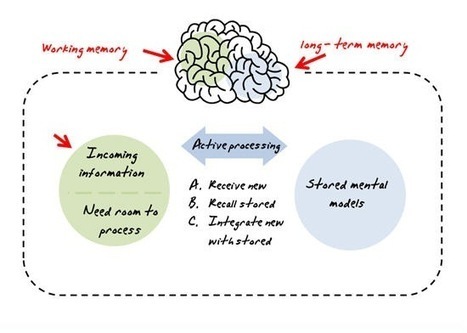 Your new post is loading...
 Your new post is loading...
It’s happening again. I feel the sentence structure at a subdermal level and know I’m confronting plagiarism before my eyes reach the period. A quick Google search reveals that my ninth-grade student did not write this sentence: “The memories stirred by the song cause Odysseus to weep, and, though he tries to hide it, the king notices and distracts the crowd by suggesting they begin an athletic competition.”
Via Elizabeth E Charles
“Digital literacy involves finding, using and disseminating information in a digital world” (Deakin University, 2016). Digital literacy is also a transversal skill, which means that by having good digital literacy, a person’s ability to learn and improve other skills increases through the use of technology.
In the next 5-10 years, a number of routine jobs will be taken over by automation and artificial intelligence (AI) (ACS, 2016). This automation and AI will also be ingrained in workplaces, homes and everything we do, due to the increased productivity and lifestyle gains that these technologies provide. In order to remain current in the workplace, and to be able to fully function in society, the need for good digital literacy has never been greater.
Via Elizabeth E Charles
Everyone wants to build good elearning courses, whether for sharing new information or changing workplace behaviors. While not all elearning objectives are the same, there are things you can do in your course design that help your learners recall the information and use it in the real world. To do this, you need to …
Via Elizabeth E Charles, diane gusa, Mark E. Deschaine, PhD
|
Dragan Gasevic looks at how learning analytics can be used to support the student experience as a tool for learning gain.
Understanding what satisfaction means in the context of learning is also key. Happiness is not necessarily an indicator of “good” learning. I refer to the concept “desirable difficulties”, which is well established in educational psychology, including spaced practice or self-testing. It relates to the effective approaches to learning that can be promoted by in-course expectations. Learning analytics can offer a way to understand the complex interplay between learning gains, effective study and teaching practices, and student satisfaction.
However academics and students choose to use the data that are increasingly available on their student journey, context is key. You can’t separate the data from the organisational culture, national and regional differences, pedagogical differences between courses, and the political context. Rather than applying the same data rules across all providers and courses to reach a neat set of answers, we must look at the context in which we’re operating.
Even within an institution, one size absolutely does not fit all. The approach we’ve taken with our science and technology students would not work with, say, English or history students, although we’re following with interest the development of writing analytics that some of our global partners are working on, where analytics are being used to gather evidence of, for example, the coherence and summary of an argument.
Via Miloš Bajčetić, Dean J. Fusto, Elizabeth E Charles, Lynnette Van Dyke
Information literacy is the set of skills needed to find, retrieve, analyze, and use information and is the basis for lifelong learning. It is common to all disciplines, learning environments, and education levels. It enables learners to master content, extend their investigations, become more self-directed, and to take greater control of their own learning.
The five core information literacy competencies are the ability to:
identify needed information.
access information effectively & efficiently.
evaluate information.
use information appropriately.
understand information related issues.
Via Elizabeth E Charles, Anne Versonne
|



 Your new post is loading...
Your new post is loading...










